As a result of the reforms of Peter I, a lot has changed in the original way of life of that old boyar Russia. Comprehended transformations and cooking. Not only the set of dishes has changed, but also the order in which they are served.
Everything French was in fashion, however, even the highest nobility of the Russian Empire, along with oysters only brought from Holstein, ordered old Russian dishes to be served on the table. F. F. Vigel wrote: “ french dishes were revered as a necessary ceremonial of dinner parties, and Russian dishes: pies, jelly, botvini remained their usual favorite food.
The abundance and variety of dishes amazed visiting foreigners. Dinner consisted of 7-8 entrees or entrees. If dinner was given in a rich Moscow or St. Petersburg house, then the number of participants in the meal sometimes reached 300 people. At the same time, there were guests invited by the hosts, as well as just acquaintances who came to visit at lunch time. The story of a gentleman from Moscow, who ate exclusively at dinners given in noble houses, was retold for a long time, and when he died, no one could remember either his name, or origin, or who he knew.
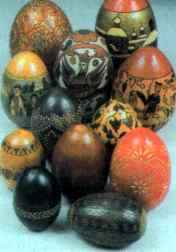
What was the repertoire of the feast of the past? We have already figured out that a certain number of dishes were devoted to foreign dishes. Unfortunately, modern Russian people are now probably not even familiar with the names of some dishes. Soup was an indispensable dish of the traditional feast.
One of the many books on etiquette says: “When dinner is not ceremonial and relatives and friends are present at it, then all the deep bowls for soup are usually placed in front of the hostess, who in this case pours the soup herself, and the footman carries it to those sitting at the table. At large ceremonial dinners, soup in deep bowls is already placed in front of each guest's appliance.
Russian cabbage soup
Shchi is a traditional and primordially Russian soup. They were prepared and loved by literally everyone in Russia - from serfs from the hinterland to the Royal Family and visiting foreigners. Pies or kulebyaka with meat were served with fresh cabbage soup, and with sauerkraut soup - buckwheat porridge. Shchi at that time was cooked in a variety of ways:
- cabbage soup gray (from young cabbage seedlings);
- cabbage soup lazy (vegetables for them were cut very large: a head of cabbage into four parts, carrots and onions in half);
- prefabricated cabbage soup (“beef, fresh meat, ham and lamb cut into pieces, a goose and two whole chickens are used for these”).
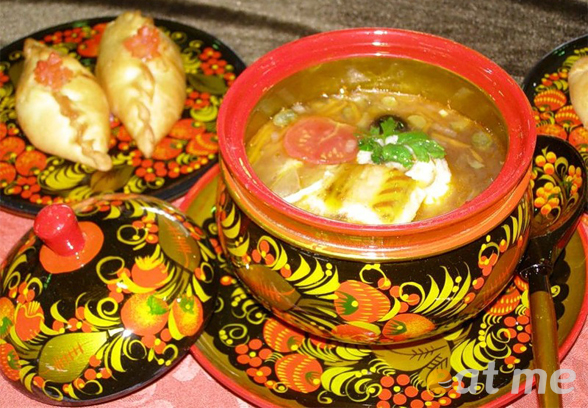
Botvinya
Botvinya was considered a favorite cold soup in Russia. Dahl's dictionary gives the following definition of botvinya: "Botvinya is a cold stew for kvass from boiled tops, onions, cucumbers, fish." It was made with boiled fish (sturgeon, stellate sturgeon, pike perch), and served with slices of balyk.
Crayfish or crabs usually served as a side dish: “... then botvinya was served with ice, with freshly salted sturgeon, with Ural salmon and a whole mountain of peeled crayfish necks on a platter ...” Botvinya was one of the favorite dishes in the family of A.S. Pushkin.
What an ear! Yes, how fat: as if she twitched with amber
“If turtle soup belongs to England, then fish soup belongs to Russia,” said the famous Karem. It was cooked from different types of fish, there were many recipes and variations of Russian fish soup, each housewife cooked it in her own way.
Burbot liver was added to the combined ear, master's ear was made with the addition cucumber pickle, drunk ear was boiled with the addition of white wine and French vodka. Sterlet ear was preferred by the famous fabulist I.A. Krylov. Ukha was usually served with pies - open pies, into which fish broth was poured, from which they became very juicy.
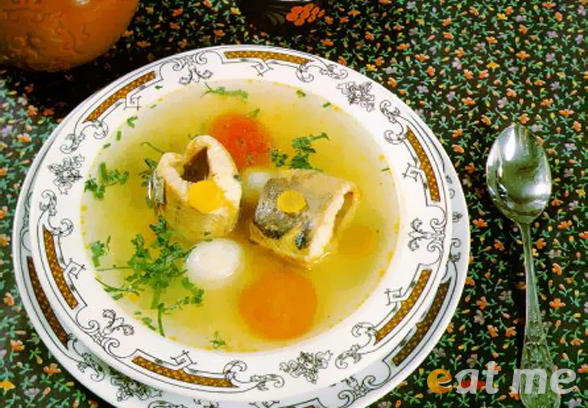
Fish cooked in every possible way
Fried, steamed, salted, smoked, dried fish was part of the diet of a Russian nobleman. Dishes from stellate sturgeon, sturgeon, salmon, chum salmon, beluga, sterlet were especially appreciated. Fish was eaten throughout the year, it was allowed even in fasting. A special Russian delicacy was stroganina made from frozen fresh sterlet. The fish slices literally melted in your mouth.
The original Russian snack was fish caviar. Foreigners looked at it with apprehension at first. unusual dish. For a long time, an anecdote circulated in St. Petersburg about how Napoleon Bonaparte's cook served boiled caviar donated by the Russian Tsar. Caviar was always served in ice vases.
Poultry dishes
TO traditional dishes Russian cuisine also includes poultry dishes: turkey with lemon; noodles with chicken; chickens in pickle; roast goose with apples; duck overlaid with cucumbers; chicken in gruel; fried chicken filled with eggs; goose and duck giblets, etc. Fried swans, cranes, peacocks, pheasants, decorated with feathers, flaunted on the tables of rich owners. All these recipes can be easily found in pre-revolutionary cookbooks, for example, in E. Molokhovets.
Valued not only Domestic bird but also hunting trophies. Most often these were hazel grouses, partridges, snipes, woodcocks. The remarkable Russian writer I.S. Turgenev knew a lot about hunting and game dishes. So, in one of the letters, he notices about the description of Levin's hunting in L. N. Tolstoy's novel "Anna Karenina": "Although Levin orders in vain to gut the great snipe and snipe - that is, to deprive them of the best part of their body."
Love for dairy is proof of the absence of bile in a person
Dairy products were unchanged on the table of a Russian person. Manor farms had their own dairies, the townspeople were looking forward to the morning milkmen, it was a great grief for a peasant family to be left without a cow-nurse.
A place of honor in the daily menu was occupied by milk porridges from various cereals- wheat, buckwheat, rye, rice. As a rule, porridge was served at the dinner table. But for dinner, yogurt was often served. This is also native Russian milk product which often puzzled foreigners. A frequent guest on the table was cottage cheese with sour cream.
Another favorite dairy product of all - cream - with thick fruits brought to the table, more liquid ones were added to tea.
They had Russian pancakes at the oily Shrovetide ...
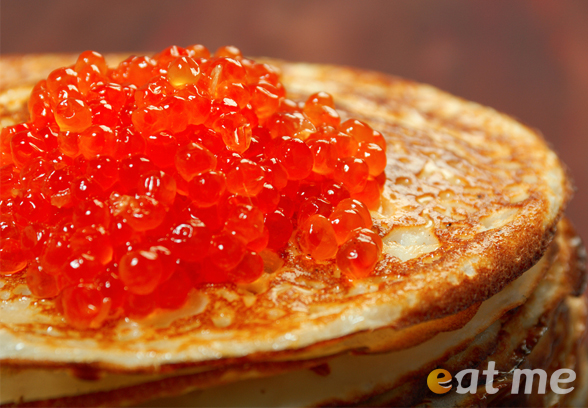
But there have never been as many dishes prepared as on Maslenitsa. During Shrove Week, it was allowed to "eat until you are full, revel until you are motionless." And this is understandable - ahead of the strictest great post, during which almost all favorite foods are prohibited.
The main delicacy of Maslenitsa was, of course, Russian pancakes. There are hundreds in old cookbooks. a variety of recipes pancakes. “Let's start with the most important axiom: real indigenous Russian pancakes are sinful pancakes,” wrote V. F. Odoevsky.
In addition to buckwheat, they baked millet, oatmeal, semolina, rice, and potato pancakes. Pancakes were served simply with butter and sour cream or stuffed with cottage cheese, caviar, mushrooms…
You won’t remember all the lean dishes, and you won’t re-read
But the merry Maslenitsa passed and. Almost everyone followed it. At that time, mushrooms reigned on the table - fried, salted, pies with mushrooms, mushroom soups. The peasants profit from them, and in uneducated Moscow the markets are littered with dried truffles. I love death mushrooms fried in a pan,” writes the maid of honor of the Empress, A. O. Smirnova-Rosset.
Apart from mushroom dishes, pea stews, cereals without milk, pickled and salted vegetables often appeared on the table in Lent. Sometimes it was allowed to serve fish.
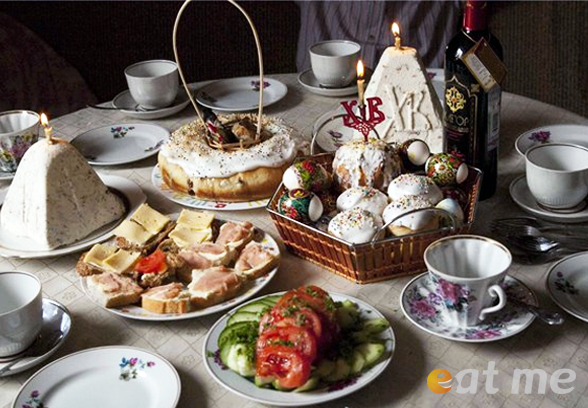
After all, it was a whole poem - this Easter table
At Easter, a variety of meat and fish dishes, colorful eggs and, of course, two long-awaited and main desserts - curd Easter and Kulich. Easter cakes, as a rule, were prepared in advance and baked on Maundy Thursday, but curd Easter was made later, according to tradition, it must have included raisins and candied fruits.
It was believed that to truly enjoy the taste Easter treats only one who has endured the fast, both physically and spiritually, can only - did not gossip, did not slander, helped those in need.
Russian grocery stores
A pocket dictionary of foreign words included in the Russian language "contains the following interpretation of the word" deli ":" This is the name of a person who distinguishes all the subtleties of taste in food and cares a lot about eating well.
Count D.A. was recognized as the first grocery store in Russia. Guryev, in whose honor one of the most interesting Russian desserts is named - semolina, aged in the oven with jam, berries, fruits and nuts.
In honor of the Minister of Foreign Affairs K.V. Nesselrode were named turnip soup, snipe soufflé, chestnut pie.
The dish named after Count A.G. is famous all over the world. Stroganoff - beef stroganoff - beef with sour cream sauce.
Modern Russian cuisine looks rather dull compared to the splendor of pre-revolutionary tables. Forgotten are not only overseas delicacies, but also the original dishes that our ancestors loved so much. But you can always go back to the roots, read old recipes and try to bring a piece of bygone days, alluring with their charm, to the modern menu.
Our cuisine is considered one of the most satisfying, delicious and rich in the world. Ancestors knew a lot about food and loved nice table. They gathered to him five or six times a day. Everything depended on the time of year, the length of daylight hours and economic needs. And it was called - interception, afternoon snack, lunch, paobed, dinner and pauzhin. Interestingly, this tradition was sacredly observed until the abolition of serfdom. With the advent of capitalism, the number of daily meals was reduced first to three times, and then to two.
The main ingredients of Russian cuisine dishes
They have always been very diverse. The menu of the ancestors contained cereals, and meat, and fish, and vegetables, and mushrooms, and berries, and fruits. They also knew how to make butter. By the way, linseed oil were not used for food. It was used as a base for paints. Fragrances from cedar and hazel were very popular, and food was also flavored with hemp, mustard or poppy seeds. In general, vegetable oil in the diet did not occupy such a large place as at present. But the pain was different varieties and types. 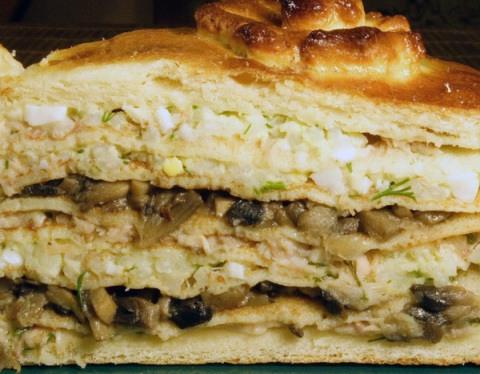
Historic changes
After the adoption of Orthodoxy, Russian folk dishes became even more diverse. No wonder. If more than half of the days of the year it is forbidden to eat meat, milk, eggs, fish and vegetable oil, you have to be creative.
After long fasts, the Russians with pleasure indulged in modest feasts, the benefit of cattle was bred a lot, and the hunting grounds were teeming with living creatures - hares, pheasants, partridges, ducks, capercaillie, hazel grouse, black grouse. They hunted bears, deer, elks, wild boars. The annexation of the lands changed the Russians a lot and greatly expanded our menu. A lot of new things were introduced into the diet of compatriots by the tsar-reformer - Peter 1. He started the tradition of making butter from cream and sour cream, as is customary in Holland. He owns the introduction of new crops into the crop rotation and the ban on the cultivation of amaranth, which is currently known as amaranth. 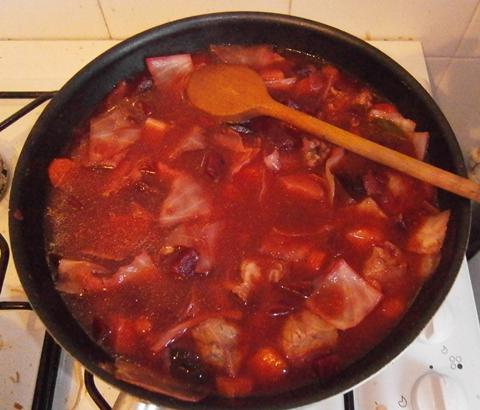 The way of life in Russia has been repeatedly updated, and traditional Russian folk dishes have also changed. The history of the country with a circle of everyday traditions is beautifully described in essays on Russian antiquity by Mikhail Ivanovich Pylyaev, Nikolai Ivanovich Kostomarov, Ariadna Vladimirovna Tyrkova-Williams.
The way of life in Russia has been repeatedly updated, and traditional Russian folk dishes have also changed. The history of the country with a circle of everyday traditions is beautifully described in essays on Russian antiquity by Mikhail Ivanovich Pylyaev, Nikolai Ivanovich Kostomarov, Ariadna Vladimirovna Tyrkova-Williams.
Famous dishes of Russian cuisine
Traditions have changed, but some preferences have stood the test of time. All over the world, such Russian folk dishes as cabbage soup, pancakes, borscht, porridge, kulebyaka, pie, jelly, okroshka, kvass, sbiten, mead, etc. are well known. Fish, mushrooms, cereals are what they cooked most often . 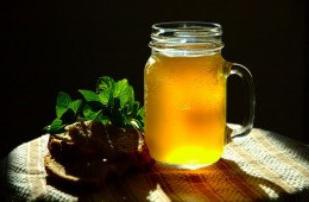
Our ancestors did not know smoking. It came to Russia at the beginning of the 20th century. Meat and fish were boiled, baked, stewed, salted, fermented, dried or eaten raw, in the form of stroganina. Sturgeon, sterlet, beluga were by no means the diet of the rich alone. Delicious fish soup, jellied or pies from noble spruce fish and simple people. Pancakes with black caviar, hare pies, stellate sturgeon jelly, porridges with melted cream foam - these are all traditional Russian folk dishes. The list is far from definitive. Too little chronicle information has survived to this day. More or less complete evidence dates back to the 9th century.
Shchi and Russian stove
Shchi is a universal dish that is well known to visitors to Russian restaurants abroad. The correct pronunciation of this word even became a kind of entertainment. In German, for example, as many as 8 letters are used to designate the letter combination "shchi". Of these, 7 are consonants. Try to fluently pronounce a combination of seven consonants and one vowel at the end several times. 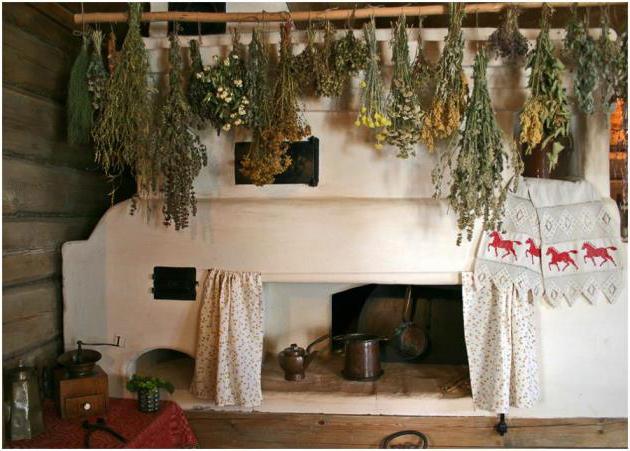
Shchi can be cooked in vegetable, mushroom, meat, fish broth. Sour cabbage soup is cooked from sauerkraut or brine from other vegetables. Russian folk cuisine did not subject the dishes to stepwise heat treatment. If cabbage soup, borsch, porridge, etc. were cooked, then no products for them were fried separately, as is customary now. Either boiled or baked. Cooked in a large stone oven. The dish did not come into contact with an open fire. It seemed to be languishing at a constant or slowly decreasing temperature from all sides, and not just from below. This gave the food a special taste, structure and texture. The food was not brought to a boil. Other indicators were more significant - before bread, that is, very high heat, after bread - that is, at a lower temperature and in a free spirit. The food was cooked for a long time. Any cabbage soup or porridge that had been steamed in a hot oven for several hours acquired completely amazing taste, a useful material with such processing, they were preserved much more fully. 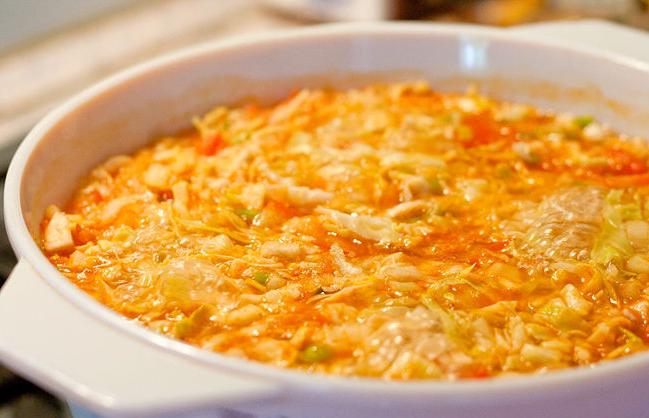
On electric or gas stove it is impossible to reproduce the taste that distinguished Russian folk dishes. Their names are in the old cookbooks- these are kalia, tyurya, zatiruha, nanny, kurnik, kulaga, malt, logaza, zhur, mess, tumbler, gamula, vole, krupennik, oatmeal, etc.
Oatmeal
Oatmeal - a specially prepared flour made from oats or barley, which can be used in the most different dishes. The grain cleaned from the hard husk is steamed, dried, calcined and ground into flour. Oatmeal flour is poured with hot milk, water, broth, decoction of berries, vegetables or fruits. It does not form gluten, but swells and thickens very well. Cooking or boiling oatmeal is not necessary. This flour contains a large amount of lecithin, which is destroyed at high temperatures. Oatmeal was sometimes thickened with cabbage soup and Kalya. Oatmeal porridge in bacon was part of the diet of the soldier's menu. Oatmeal was mixed with berries and placed in the oven for several hours. The berries were given juice, soaked in flour and baked. It turned out delicious treat eaten with honey. 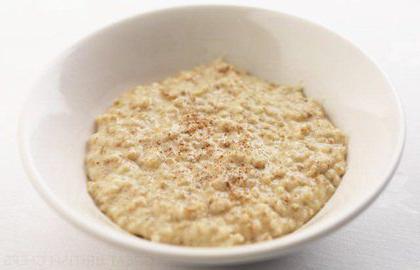
Calla
In modern terms, kalya - fish soup Or rather, saltwort. However, the old kalya was made in brine from sauerkraut or cucumbers. It was allowed to add kvass to the brine. The fish was taken from sturgeon species, with caviar. Often prepared for one black caviar. Kalya was distinguished by a very rich broth with spicy taste. At other times, it was made from ducks, black grouse or quails. Cooked in the oven for several hours, it turned out to be incredibly fragrant, and the bones of the game were boiled to a soft state. Grown in vegetable gardens spices- dill, cumin, horseradish, mustard, etc. Fragrant herbs our ancestors used it skillfully, but over time, many secrets have sunk into oblivion, as the place of domestic herbs was taken by spices brought from East Asia. 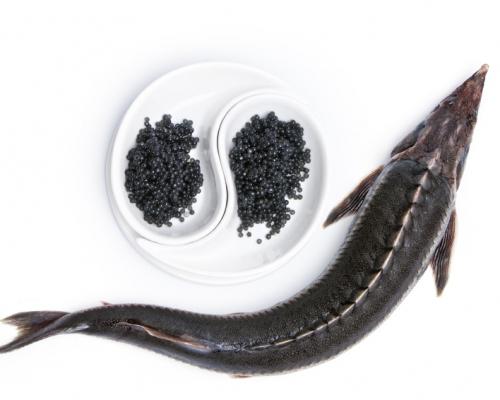
Currently, kalya can be made from catfish or halibut and cod roe. The brine is suitable from barrel cucumbers, cabbage, olives, watermelons or other fruits. It is important that it does not contain vinegar and preservatives.
Kurnik
This is an old festive Russian folk dish. The recipe implies yeast or unleavened dough. Previously, small pies were made, which were stuffed with porridge, mushrooms, fish, vegetables and combined into one large pie. It baked very well, turned out juicy and lush. Not a single wedding was complete without a chicken. It was also used to predict the future. Depending on who got what filling, interpretations were made. 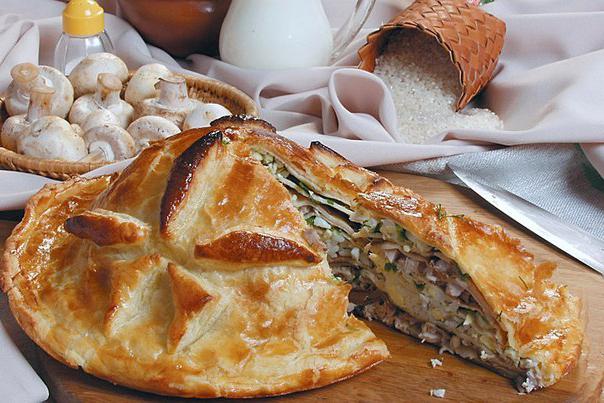
Okroshka
Okroshka was prepared mainly in the summer. It is a cold dish similar to soup. It is based on kvass and finely chopped fresh vegetables. Modern okroshka is made not only on kvass, but also on kefir. In addition to cucumbers, green onions, radishes, eggs, boiled meat is put in it, seasoned with sour cream and flavored with plenty of salad greens - dill, parsley, etc. 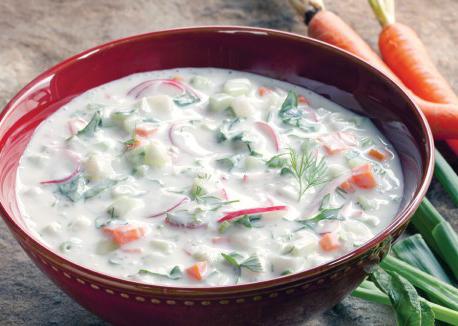
Honey
There has always been a lot of honey in our country. Its in in large numbers supplied for export. Before the advent of sugar, food was only sweetened with honey. They cooked berries with it for the winter, made drinks. Honey was not subjected to heat treatment, as they knew about great benefit this health product. Drinks from it were made warm or cold.
Water was boiled in a samovar and herbs were infused in it. Such decoctions were used everywhere. chamomile, Ivan-tea, viburnum, raspberries, strawberries and other plants were collected and dried in the summer. Explosions on honey old recipes are back in fashion again. 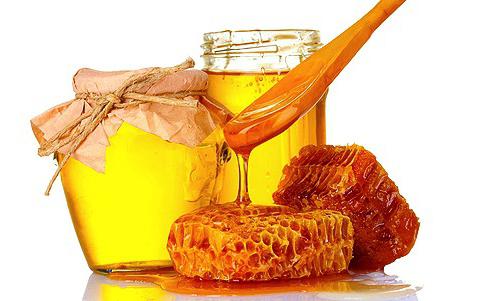
Jellies and jellies
Foreigners noted that cold dishes are very good in Russia - jelly and jelly. They were cooked from sturgeon fish. In winter, the meat-eater was made from suckling pigs and poultry. They practically did not eat beef, as they plowed the land on bulls, and cows gave milk. Pork was also not very favored. Chickens and ducks laid eggs. The main supplier of meat was the forest. Game was the main meat during non-fasting periods. Jellies and jellies were seasoned with sauces of horseradish, mustard, vinegar and salt. 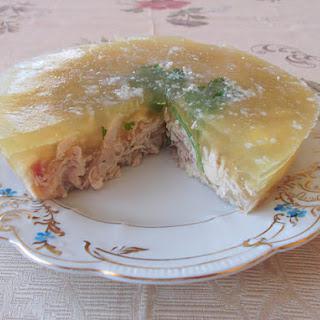
A fish
Sturgeons were taken from the White Sea in winter on sledges to central Russia. The caviar of this fish was not a delicacy. Both the poor and the wealthy ate it in large quantities. In large barrels it was taken abroad. Fresh caviar was eaten with vinegar and salt.
Smelt was baked in the oven until crispy and served on the same dish. It was baked so that the bones and fins became very soft and invisible.
Fillings for pies were made from sturgeon vyaziga. The vyaziga was taken out, cleaned and dried. As needed, they soaked it, cut it and, mixing it with porridge, made pies. Rybniki, or fish pies, were made from raw fish. 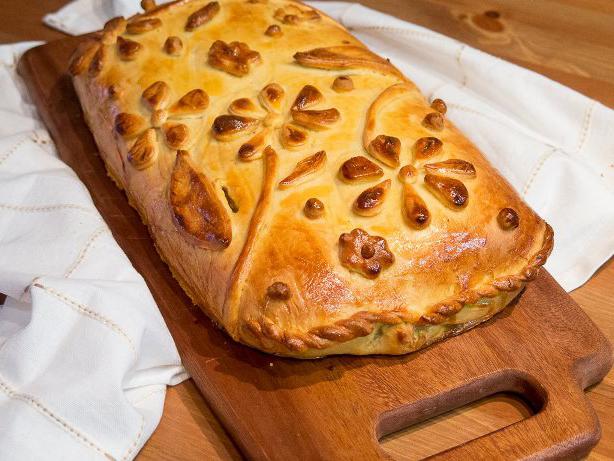
Fish soup from sterlet, stellate sturgeon, sturgeon or beluga was made in a complex broth. First boiled small river fish, which was not cleaned, but thrown away after cooking. This broth, or yushka, served as the basis for the royal fish soup.
Russian folk dishes were not prepared from slaughter, obtained by women. Also, living creatures that feed on carrion, that is, crayfish, were not suitable for food.
After Peter the Great's reforms and the emergence of a "window to Europe", wine and sugar began to be imported to Russia. A trade route was laid through the country from China and India to Europe. So we got tea, coffee, spices, etc.
Along with them came new traditions, but Russian folk dishes, photographs of which are presented in the article, are still loved and in demand. If you cook them in the oven or slow cooker, they will look a bit like authentic options.
The Old Russian stage of development of Russian cuisine lasted almost 500 years. We can judge the originality of the cuisine of that period from one of the ancient written monuments - the book "Domostroy", which was written by the adviser to Tsar Ivan IV the Terrible, Sylvester. In fact, this book can be considered the first cookbook in Russia, because the author compiled a list of modern dishes and drinks. The cuisine of that time was distinguished by strict rules and traditions that were observed in every family. The best dish was considered to be the one made according to the recipe received from the mother or grandmother. It has always been customary to carefully look at how the same dish is prepared by different housewives. Old Russian cuisine required strict adherence to the recipe, and culinary fantasies were not particularly welcome. The food was simple, not very varied, but the dishes and drinks served had to be plentiful, especially on the festive table. The originality of ancient Russian cuisine was determined both by the products that were used and by the methods of their preparation. Dishes in the old Russian cuisine were divided into flour, dairy, meat, fish and vegetable.

The dishes prepared from flour included, first of all, bread, mainly rye, which appeared several centuries ago and still remains characteristic of Russians. Rye bread was considered healthier than wheat bread, many medicinal properties were attributed to it. Wheat bread was the so-called holiday bread. It was served on special occasions and baked in the form of rolls.
The second place among flour products was rightfully occupied by pies. According to the method of preparation, pies were “spun”, they were fried in butter, and “hearth”, baked in the oven. Hearth dough was always prepared from leavened dough, with yeast, and yarn ones could also be made from lean dough. Pies had an oblong shape and different sizes. The big ones were called pies, and the small ones were called pies. All pies, with the exception of sweet ones, were served hot.
Other types of dishes baked from dough included loaf. It was a rich bread prepared in a variety of ways. The dough for the “beaten” loaf was whipped in a separate bowl in butter, for the “set” - in milk, for the “yaik” - in eggs. And also kurnik, pancakes, boilers, cheesecakes, pancakes, brushwood and hung were made from dough.
We successfully prepare some of these dishes even today. Kissels, which were traditionally brewed with flour, and, of course, various porridges, also belonged to flour dishes.
Dairy foods were represented, first of all, by noodles with fresh or baked milk added to it, milk porridges and all kinds of dairy products: cottage cheese, sour cream, sour cheeses.
Meat in Russia was eaten boiled or baked. Boiled meat was served in the first courses: cabbage soup, fish soup, brines or under boils (sauces). The meat was baked in the oven. It was customary to use lamb, beef and poultry (chickens, ducks, geese). They also prepared game meat: venison, elk, hare, and wild bird meat: ducks, geese, swans, hazel grouses and quails.
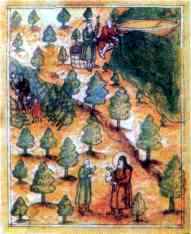
Russia has always abounded in fish, both sea and river. It was dried, dried, salted, cooked under boils and steamed. Fish was also served in the first courses: pickles, fish soup, hodgepodges (selyanka). They ate it baked. Caviar has always been considered a special delicacy, especially fresh granular caviar - from sturgeon and white salmon. Caviar was consumed with vinegar, pepper and onion, it was boiled in vinegar or poppy (almond) milk or fried.
Of particular note is the method and technology of cooking Russian national dishes. The stoves built for heating the dwelling served at the same time for cooking. In Russian cuisine, the cooking process has long been reduced to cooking or baking food in a Russian oven (roasting was borrowed from the Tatars later). Boiled food was only boiled, and what was intended for baking was only baked. Thus, Russian folk cuisine knew neither the combination of products, nor their combination, nor double heat treatment. The whole technology of hot cooking was reduced to heating. The heat of the oven could be of three degrees: “before the bread”, “after the bread”, “in the free spirit”, but food was always cooked without direct contact of the dishes with the fire, heating up only through a thick layer of red-hot bricks. In this case, the temperature could either be constant all the time or falling if the furnace gradually cooled down, but never increased, as is customary with modern cooking on the stove. 
The main feature of the Russian stove is a uniform, stable heat that lasts a very long time even after the stove has already finished heating. Depending on the temperature regime in the oven, a different dish was prepared each time. At a temperature of 200 ° C, the famous Russian pies were baked: kulebyaki, pies, kurniki and shangi; baked a whole piglet or goose. In the cooling oven it was possible to simmer milk, boil crumbly cereals, cook roast. The taste of food cooked in the Russian oven was very special due to the fact that the dishes were stewed or half-stewed.
For family celebrations and Orthodox holidays in all families, regardless of wealth and class, it was customary to cook the same certain dishes. Already in the Old Russian period, ritual cooking acquired great importance, this tradition was preserved for a very long time, almost until the Soviet era.
Among the festive dishes, one should especially note those prepared for Maslenitsa, which is celebrated on the eve of Great Lent. The main difference of this holiday was reckless fun and an abundance of pancakes.
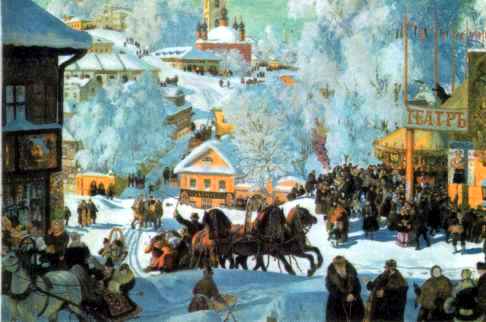
Each hostess tried to treat her family and guests to glory. And the main course was pancakes. For gourmets, that is, on Wednesday of Shrove Week, mother-in-laws invited their sons-in-law and daughters “to pancakes”, hence the expression “to mother-in-law for pancakes”. This custom was especially observed in relation to the young, recently married. As a rule, on this day all relatives gathered for a walk. But on Friday, at the mother-in-law's supper, the son-in-law treated the mother-in-law with the father-in-law to pancakes. True, the food was very peculiar. The curiosity consisted in the fact that the called mother-in-law was obliged in the evening to send all the pancake belongings to the young people's house: tagan, frying pans, a ladle and even a tub in which the dough for pancakes was kneaded. Father-in-law sent flour and a tub of butter.
The most diverse beliefs and traditions are associated with pancakes among Russian people. There was a sign that if you feed a woman in labor with pancakes, childbirth will be easy, and the newborn will be strong and healthy. And on the memorial table, pancakes were an obligatory meal, symbolizing, on the one hand, the vicious circle of earthly existence, and on the other, the infinity of the existence of spiritual life. No one knows when pancakes first appeared on the Russian table, but it is known that they were a ritual dish among the pagan Slavs.
The division of dishes into lean and modest occurred in Russian cuisine very early and had big influence for the formation of future traditions. On the one hand, the strict delimitation of the lenten and fast food tables led to a certain uniformity of the products and dishes used, but, on the other hand, enriched Russian cuisine with mushroom and fish dishes, dishes prepared from wild berries and herbs (nettles, gouts, swans, etc.).
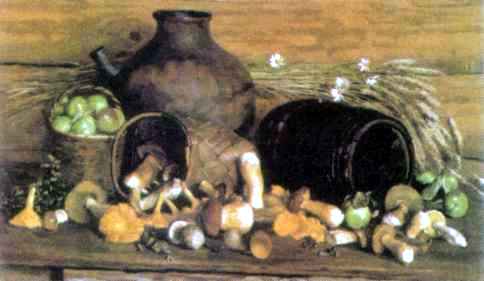
What was it Lenten menu? The most common were liquid foods: stews, voles, solo spirit, kulaga, oatmeal, oatmeal jelly with vegetable oil, and sauerkraut, salted mushrooms, mushroom dishes, cereals from barley, oatmeal, millet, barley, buckwheat, much later - baked potatoes. Perhaps the most famous fast food is tyurya. This is cold salted water with slices of bread and onions.
Often during fasting, oatmeal was prepared, which was made from fried oats, or rather, aged during the night in an oven that was not too hot, but warm enough.
Flour obtained from such a grain lost its ability to form gluten, but it swelled well in water and quickly thickened. Oatmeal was kneaded on chilled boiled water, which was slightly salted. It was the favorite delicacy of the kids. From the thickened oatmeal, the children sculpted fish, cockerels, bunnies - both fun and tasty, and hunger drives away. Oatmeal was usually served as an afternoon snack or supper before going to bed.
Vole is a liquid stew, which was prepared from rye flour, or rather from fermented rye dough- breakups. Raschin set sour the day before. When it turned sour enough, water was boiled in a pot, salt was added, Bay leaf, onion, spacing and “nailed up” with a hammer (a device that was cut out of a young, carefully planed pine tree, on which fan-shaped thin knots 3-4 cm long were left). The vole was seasoned with onions, dried mushrooms, and on some days of fasting with herring or dried fish.
Great Lent was followed by the most important Orthodox holiday - Easter, or the Resurrection of Christ. Easter table It was distinguished by festive splendor, was plentiful and very beautiful. They baked pig, lamb or ham, fried veal. Flowers decorated dishes, as well as the table, icons and the house. They still bake for the Easter meal rich Easter cakes, cook cottage cheese easter and paint eggs. According to ancient tradition, eggs were dyed and laid on a dish among specially sprouted greens of oats and wheat.
Christmas is one of the brightest Christian holidays. The evening on the eve of Christmas - Christmas Eve or Sochevnik, got its name from the word "sochivo" - a ritual dish prepared from poppy juice with honey and porridge from red wheat or barley, rye, buckwheat, peas, lentils, later - rice. Sochiv began a meal on Christmas and Epiphany Eve, as well as at home, christening, commemoration, with the only difference being that this porridge, often called kutya, was different in composition. So, Christmas kutya was prepared lenten. It was prepared with poppy, almond, nut, hemp juice with the addition of honey and crushed walnut kernels, hazelnuts, almonds. On the second day of Christmas, they cooked a woman's porridge, or a woman's kutya. In ancient times, it was customary to visit the house in which a newborn appeared, and among the gifts to bring grandmother's porridge and grandmother's pies. Unlike the Christmas Lenten kutya, Babkina was cooked “rich”. At the commemoration, they served a lenten funeral kutya - “kolivo”. By the way, rye or wheat straw, stalk and ear in ancient times were also called “kolivo”. Hence, perhaps, the name kutya, since the Old Believers, for example, cooked it only from red wheat. This custom continues to this day.
Among family holidays, for which it was customary to prepare special dishes, one can single out weddings and commemorations.
![]()
The traditional Russian wedding was usually played in the fall, and the preparation for the solemn day could last about two months and consist of several stages, none of which could be missed, this was considered a bad omen. As for the wedding dinner, there was a whole set of rules and regulations on this subject. On the Russian wedding table, the dishes were deeply symbolic. Dough has always been a symbol of prosperity and fertility. Therefore, for the wedding, first of all, they prepared a loaf. In some provinces, the word "loaf" called the wedding itself. And a caravan - a special wedding rank. At the wedding, cakes were also baked. Only a woman who lives with her husband in love and harmony and has good children could supervise the baking: it was believed that the family way through the cake is transmitted to the young. The loaf was decorated with flowers and sprigs of viburnum (a symbol of love). The one of the young who bites off the biggest piece
pie, and will be the master of the house. At the same time, the newlyweds festive table they were not allowed to eat what the rest of the guests ate. The groom could taste a little loaf of cheese and drink wine, the bride was most often not allowed to do this either, but wedding table should have been bursting with food. A loaf was placed in the center of the table, surrounded by honey pies and rolls, saek, cheesecakes, and spicy gingerbread. A special pie was prepared for the wedding feast - “kurnik” with eggs baked inside and decorated with a chicken head made of dough. Since ancient times, the custom has come down to us to feed the newlyweds with chicken before the festive dinner in secret from everyone. Chicken was certainly served to guests. Another obligatory treat for a Russian wedding is pork. Pork dishes were supposed to provide young people with wealth and well-being. I must say that until the XVII century. in Russia they did not know either dances or orchestras, so the only entertainment at the wedding was a feast. When snacks were eaten, a fried swan was brought in (for the common people, a fried rooster replaced the swan). The groom had to touch the bird with his hand and order it to be cut. The bride and groom could eat only at the end of the common feast in their bedchamber.
A very important feast, filled with numerous symbolic dishes, was a funeral feast. Kutia, honey and oatmeal (cranberry) jelly, in some areas - fish pie, pancakes were indispensable dishes at dinner after the funeral. Kutya, as a rule, was cooked from whole, unbroken grains - most often wheat. Kutia, like the grain from which it is made, marks the constancy of the rebirth of life, despite death. Kutya was usually prepared sweet, with honey or molasses. They said, "the sweeter the kutya, the more pitiful the dead." Kutya should have been taken with a spoon three times. In addition to rye, oatmeal or cranberry jelly, a bowl of honey, diluted with water or mash, was obligatory on the table. It was believed that they "paved the way for the dead." As a rule, pancakes were served on the 9th and 40th day, and on the day of the funeral pancakes were not put on the table. In some areas, flour was also served - boiled flour with milk, or kulesh - porridge with lard. They ate with spoons (they didn’t use knives and forks at the funeral table for a very long time), and they broke the cake with their hands. On the days of fasting, the memorial table was supposed to be fast.
It is interesting that in traditional Russian cuisine it was not customary to mix products, and even Lenten table at first it was a dish in which each type of vegetable, mushroom or fish was cooked separately. Vegetables - cabbage, turnips, radishes, peas, cucumbers - were eaten raw and salted or steamed, boiled, baked. Dishes such as salads have never been typical of Russian cuisine and appeared in Russia already in the 19th century. as one of the borrowings from the West. And even then, at first they were made mainly with one vegetable, which is why they were called "cucumber salad", "beetroot salad", "potato salad". Mushrooms and fish were also not mixed. They were boiled and salted separately from each other. fish ear cooked from one type of fish. Spices were used to diversify the taste of dishes. Onion and garlic were used, and in very large quantities, parsley, anise, coriander, bay leaf, black pepper and cloves, which appeared in Russia already from the 10th-11th centuries, and later, in the 15th - early 16th centuries, this set was supplemented with ginger, cinnamon, cardamom, calamus and saffron. Dishes were prepared with the addition of various oils: hemp, nut, poppy, wood (olive), and much later - sunflower.
In the medieval period, liquid hot dishes began to be consumed, which received the common name "khlebova". These are fish soup and cabbage soup made from vegetable raw materials, as well as different kinds flour soups.
At first, milk and meat were consumed quite rarely. Moreover, some types of meat were completely banned, such as veal. The meat was boiled, added to cabbage soup and porridge, but almost never fried. Milk was used to make cottage cheese and sour cream.
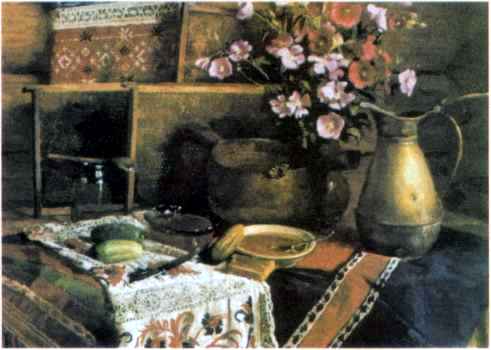
The main sweets in the old Russian cuisine were honey and berries, from which jams were made. The berries were also dried, mixed with flour and eggs, and made into gingerbread.
Over the centuries-old history of our country, the Russian people invented great amount recipes. For many centuries, Russian cuisine was in undeserved neglect: European gourmets considered it barbaric and rude. But, despite the lack of world recognition, Russian cuisine has developed, adopted the experience of others, enriched with new dishes and recipes.
Soups have always played a dominant role on the Russian table. The word "soup" appeared in Russian only at the end of the 18th century. Prior to this, liquid dishes were called "khlebova". Khlebov were subdivided into cabbage soup, kali, fish soup, saltwort, borscht and stews; in summer they usually ate cold soups: okroshka and botvini on kvass, beetroot soups, light vegetable soups.
The most popular, of course, was cabbage soup - there were up to 60 types of cabbage soup: with meat, with fish, head, with mushrooms, cabbage soup lazy, empty, daily, green, sour, nettle, etc. Although the rich and the poor use different ingredients to make cabbage soup, the basic principle does not change. Mandatory components of cabbage soup are cabbage and an acidic element (sour cream, sorrel, apples, brine). Carrots or parsley root, spicy herbs ( green onion, celery, dill, garlic, pepper), meat and sometimes mushrooms.
A minimum of vegetables is used in the ear. classic ear- This is a strong broth served with fish pies. Each type of fish in Russian cuisine was prepared separately, without mixing with others, in order to enjoy a pure taste. Therefore, in Russian cookbooks, the ear from each type of fish is described separately.
The classic Russian okroshka is made from two vegetables. One vegetable must have a neutral taste ( boiled potatoes, rutabagas, carrots, fresh cucumbers), and the other has a pronounced taste and smell (parsley, celery, tarragon). Fish with a neutral taste, beef or chicken are added to okroshka. Mandatory elements of okroshka - boiled eggs and sour cream. Mustard, black pepper or pickles are used as seasoning.
Another important dish of the Russian national table is porridge. It was originally ritual solemn dish used at holidays and feasts. In the XII century. the word "porridge" was even synonymous with the word "feast". Gradually losing its ritual meaning, porridge, nevertheless, became the main daily dish of Russians for many centuries. Porridge found recognition not only on the national, but even on the royal table.
Peter I, for example, loved so much barley porridge that declared her "beloved Romanov". To "ennoble" the royal favorite barley groats in the 19th century renamed to "pearl barley", i.e. "pearl" (from the word "pearl"). Nicholas II also demonstrated a commendable continuity of generations and closeness to the people: at a gala dinner in honor of his coronation in 1883, barley porridge was served to the guests.
One of the most ancient Russian dishes is pancakes. No one knows when pancakes appeared on the Russian table, but it is known that they were a ritual dish among the pagan Slavic peoples. The most diverse beliefs and traditions are associated with Russian people with pancakes: pancakes were an obligatory dish at the wake, they were also fed to a woman in labor during childbirth. One of the traditions associated with pancakes that has survived to this day is Maslenitsa, an ancient pagan holiday. During the whole week before Lent, pancakes are baked in all Russian homes and eaten with various snacks - caviar, sour cream, fish, meat, mushrooms.
Another famous Russian flour dish is black bread. It is unpopular in other countries, but in Russia not a single dinner can do without it. Black Rye bread appeared in Russia in the ninth century. and immediately became my favorite dish. It was eaten both in rich noble houses and in peasant huts. White same wheat bread they began to bake much later, and it became widespread only at the beginning of the 20th century. White bread was perceived as holiday food. Therefore, it was not baked in bakeries, like black, but in special bakeries, where it was slightly sweetened.
Another flour delicacy known in Russia even before the adoption of Christianity and survived (albeit in a modified form) to today, - gingerbread. At first, gingerbread consisted of a mixture of rye flour with honey and berry juice - they were even called "honey bread". These were the simplest and probably the most delicious gingerbread, since honey was almost 50% in them. However, gradually more and more spices began to be added to the gingerbread: cinnamon, cloves, cardamom, lemon zest, nutmeg, star anise, mint, anise, ginger, etc. spices of steel distinctive feature gingerbread dough. Due to the change in the recipe, the pastry has also changed its name.
Of course, speaking of Russian flour dishes, one cannot fail to mention pies - the most famous and favorite dish of Russian cuisine. This is one of the authentic national products that has come down to us from ancient times, avoiding any foreign influences. Since ancient times, pies have been baked on holidays to this day, and it is not for nothing that the word "pie" comes from the word "feast". At the same time, each festival corresponded special kind pies, which caused a variety of shapes, fillings and types of pies. What kind of pies were not baked in Russia: with meat, fish, herring, milk, eggs, cottage cheese, mushrooms, porridge, turnips, onions, cabbage. Pies also became a dessert if berries and fruits were used as fillings. Pies and pirozhki still remain one of the favorite Russian dishes, which can be tasted both in an expensive restaurant and visiting friends. From the 16th century we can talk about the differences in the cuisine of the monastery, rural and royal.
In the monastery, vegetables, herbs, herbs and fruits played the main role. They formed the basis of the diet of the monks, especially during fasting. Rural cuisine was less rich and varied, but also refined in its own way: for holiday dinner It was supposed to serve at least 15 dishes. Lunch is generally the main meal in Russia. In the old days, in more or less wealthy houses, four courses were served in turn: cold appetizer, soup, main course, and pies or pies. But at the feasts of the boyars, a huge number of dishes began to appear, reaching up to 50. At the royal table, 150-200 were served.
Lunches lasted 6-8 hours in a row and included almost a dozen meals, each of which in turn consisted of two dozen dishes of the same name: a dozen varieties of fried game, salted fish, a dozen varieties of pancakes and pies. Dishes were prepared from a whole animal or plant, all kinds of grinding, grinding and crushing of food were used only in fillings for pies. Yes, and very moderately.
Unfortunately, not all Russian dishes had a happy fate. Many of the original Russian dishes today, alas, have lost their significance for the Russian people, many recipes have not been preserved at all. So, for example, the former variety of fish dishes has now been reduced almost to a minimum: classic fish dishes like "telnoe" have disappeared. This is connected, of course, not only with the loss of tradition, but also with a significant impoverishment of the fish wealth of Russia. Almost went out of use and many vegetables, giving way to imported, accustomed to Russian soil. So, before the advent of potatoes, turnips, which are rightfully considered the progenitor of vegetable crops cultivated in Russia, played a huge role in the nutrition of a Russian person. This vegetable keeps well, so it was eaten all year round in different forms.
Dried turnips were considered a rustic delicacy, reminiscent of dried fruits in taste. By the way, unlike their descendants, Russian people used for food not only the roots themselves, but also the tops, making salads and fillings for their favorite soups out of it (it was considered especially tasty beet tops). Serious damage to the Russian culinary tradition caused a lack of records.
Over many centuries of Russian history, Russian chefs have invented a myriad of culinary delicacies.
Russian cuisine has long been ignored by European gourmets, to put it mildly. It was called primitive and barbaric. Overcoming these stereotypes, our chefs did not stand still, they studied very diligently and enriched national cuisine new original recipes meals.
Soups have always been loved in Russia. The word itself was fixed in the Russian lexicon by the beginning of the 19th century. Instead of the word soup, the capacious word "khlebova" was used to denote a liquid dish. Khlebov were the most diverse. These are borscht and cabbage soup, hodgepodge and stew, fish soup and kalya. V summer time years, Russian people willingly cooked beetroots, vegetable soups and, of course, okroshka and botvinya in Russian kvass.
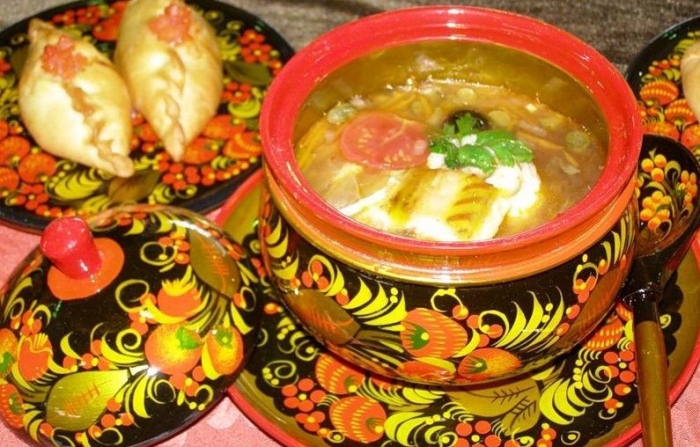
Only cabbage soup was divided into 6 dozen species. They could be lazy and empty, green and sour, meaty and fishy. The soup on the table of the rich and the poor, of course, consisted of different ingredients. But the main basics of the dish were the same. Cabbage is one of those essential ingredients. Of acidic foods, brine is invariably present. Sorrel and sour cream are also used. Russian favorite garden spices, dill and parsley, were added to the cauldron with cabbage soup.
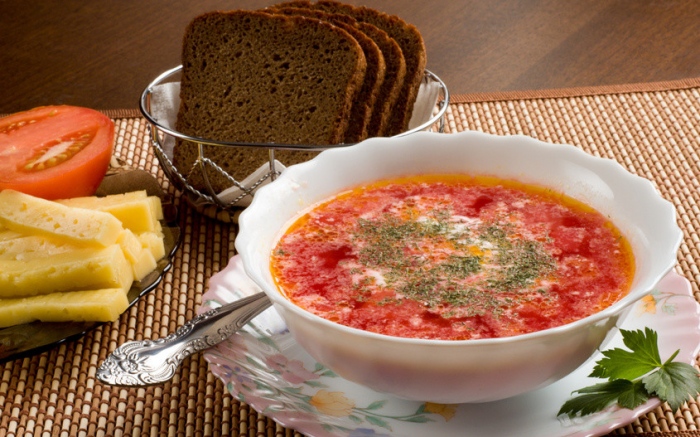
Russian ear, classic recipe, prepared almost without vegetables. Usually she should have a strong broth that is served with fish pie. Different types fish tried not to mix. This made it possible to enjoy the true taste. That is why domestic publications on culinary topics are trying to give for each type of fish independent recipe fish soup.
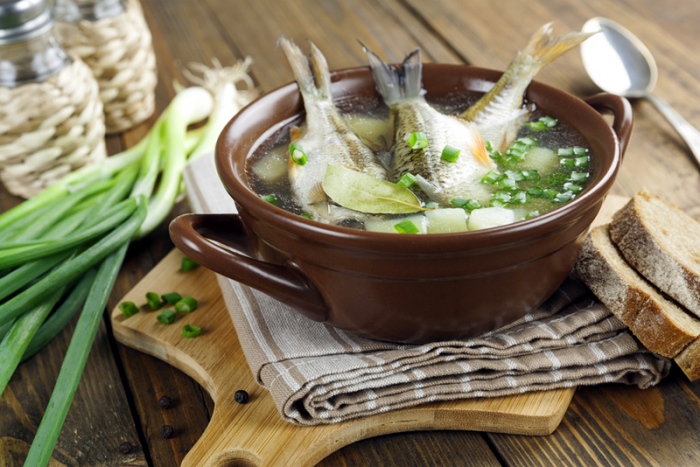
Traditional Russian okroshka contained only 2 vegetables. The secret was as follows: the first vegetable was neutral in taste (cucumber or swede, later potatoes), and the second, pronounced (dill, tarragon, parsley). They also added fish, chicken and beef to the dish. Eggs, boiled, and sour cream are another of the essential ingredients of okroshka. Russian chefs liked to season okroshka with hot oriental pepper, mustard or barrel cucumbers.
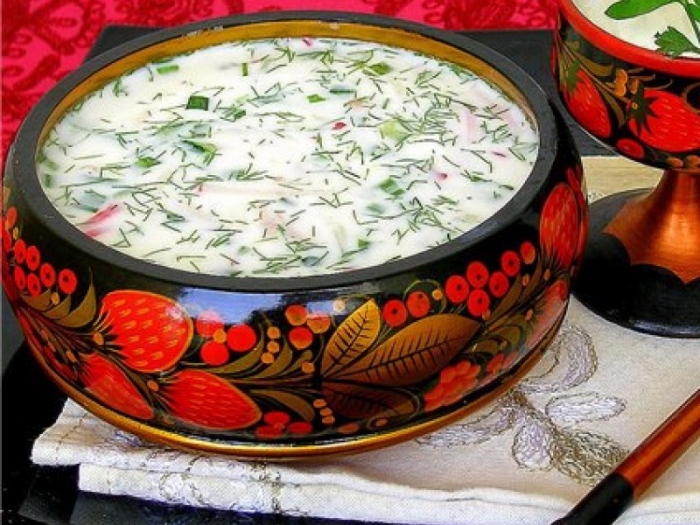
Porridge is another diamond of Russian cuisine, without which it is impossible to imagine it. Moreover, porridge can be seen not only on the table of commoners. She occupied a prominent place at the royal dinner.
![]()
Pancakes are known from the ancient Slavic tribes. They had the status of ritual food. They were given to expectant mothers before childbirth, they were fed to relatives who came to the wake. Everyone knows the tradition that has come down to us from pagan times and is associated with eating pancakes - this is a wide Maslenitsa. All week, on the eve of the strict Great Lent, the hostesses treated everyone to pancakes. They were always eaten with sour cream and butter, with caviar and mushrooms, with meat and fish.
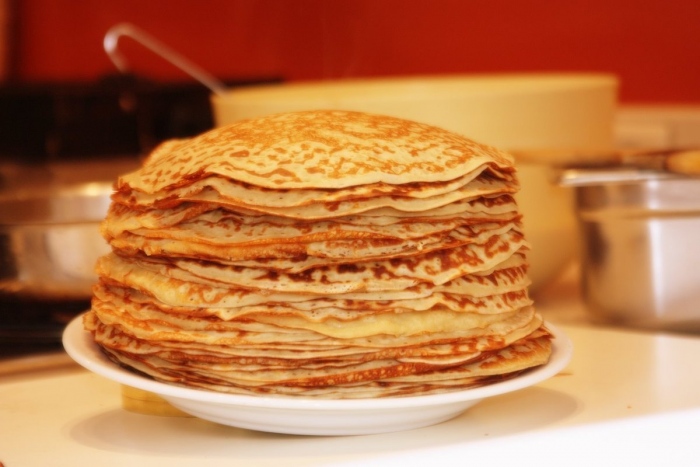
Worthy of special mention is this Russian dish like rye bread. Apart from Russia, it is almost never used anywhere. And we had a time when not a single day of a Russian person passed without black bread. And princes with boyars, and serfs with serfs - everyone loved bread made from rye flour. This product appeared on the tables of Russian people in the 9th century. And was among the main ones for almost a thousand years. TO white bread Russia has always been treated as holiday dish. It was even baked in individual bakeries, necessarily sweetened for taste.
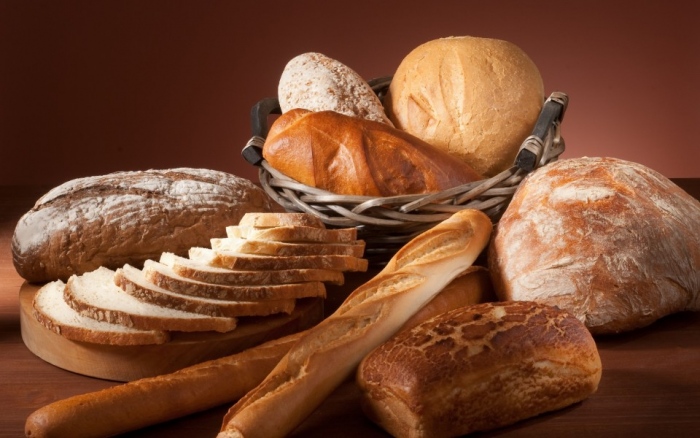
Gingerbread in Russia has always been treated with a great deal of respect. At first they were called "honey bread" and cooked with the addition of rye flour honey and berry juice. They did not spare honey (it was up to 50% in the product). This dish tasted very good. Over time, gingerbread recipes become more complicated. They begin to add spices such as mint and nutmeg, cloves and cinnamon, cardamom and lemon peel. So "honey bread" gradually turned into a gingerbread.
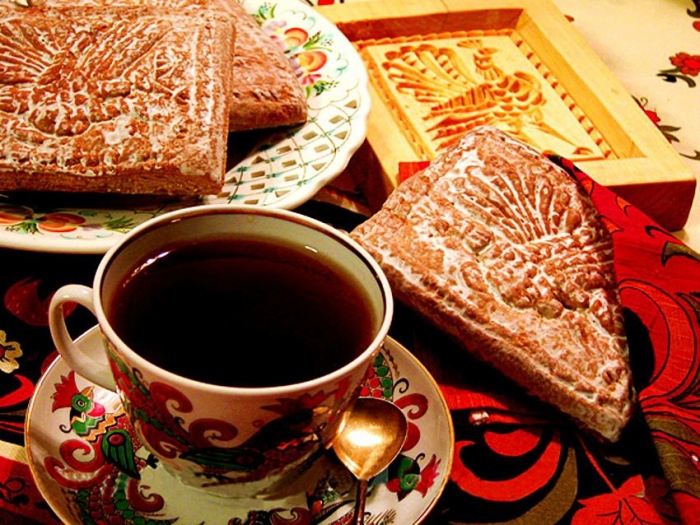
Separate kind words deserve the famous Russian pies. This is true Russian national pride. They were baked in ancient times. The very name "pie" is combined with the word feast. Each holiday in Russia had its own type of pie. And the fillings for pies are simply amazing with their variety. There is meat and fish, herring and milk, eggs and cottage cheese, mushrooms and porridge, onions and cabbage. Pies could also pass for dessert when they were filled with fruits or berries.
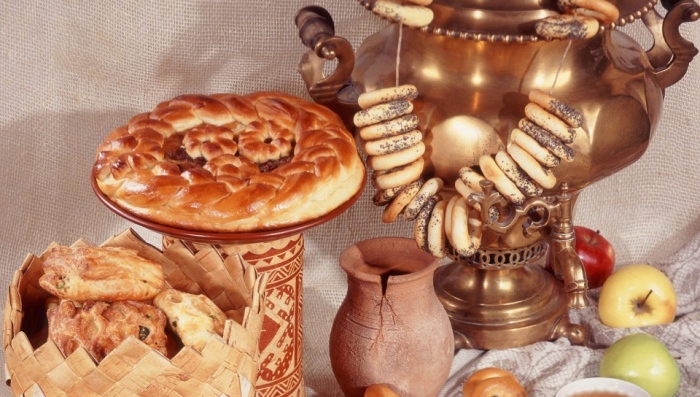
Lunch was the main meal of the Russian people. At the dinner table of a wealthy person in Russia, 4 types of dishes were to be served. This: cold appetizer, cabbage soup or soup, second course and pies. Among the boyars, the table of an ordinary dinner consisted of up to 50 types of dishes. The royal table was the most hospitable. Every day, the royal cooks served up to 200 dishes. Eat such an abundance not immediately. Royal dinners lasted a long time. Sometimes they did not leave the table for 5-6 hours in a row. Guests withstood up to 10 changes of dishes. Each change promised at least 2 dozen dishes.
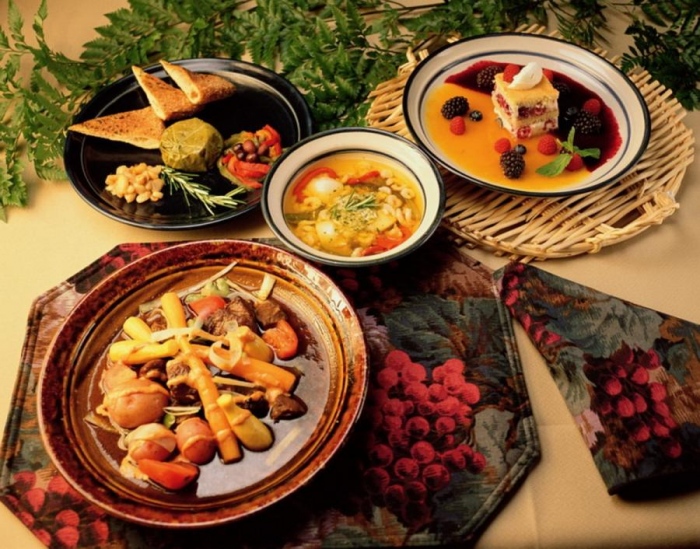
A huge number of recipes of Russian cuisine have not reached us. Unfortunately, for a long time there was no tradition of writing down recipes.


